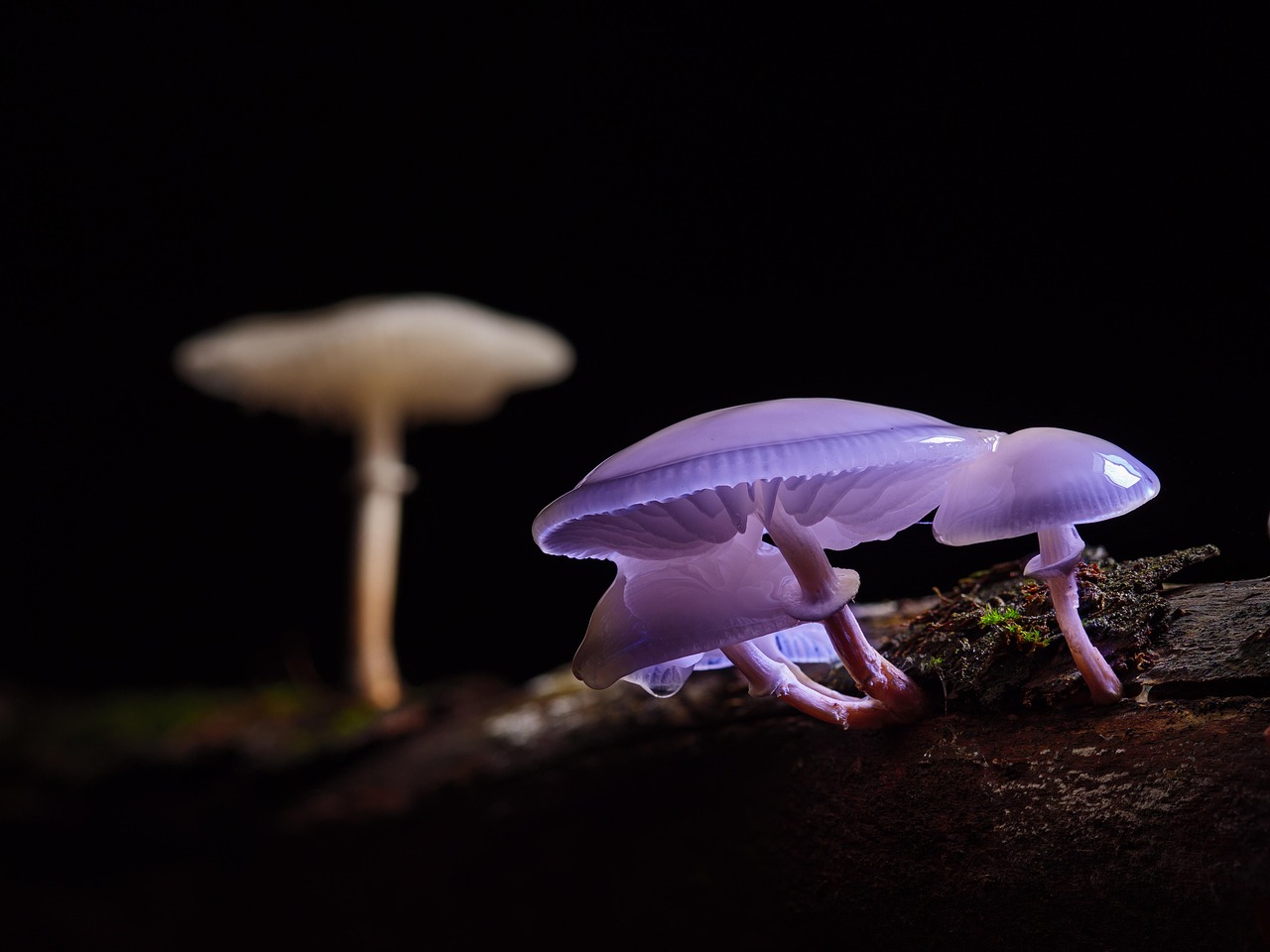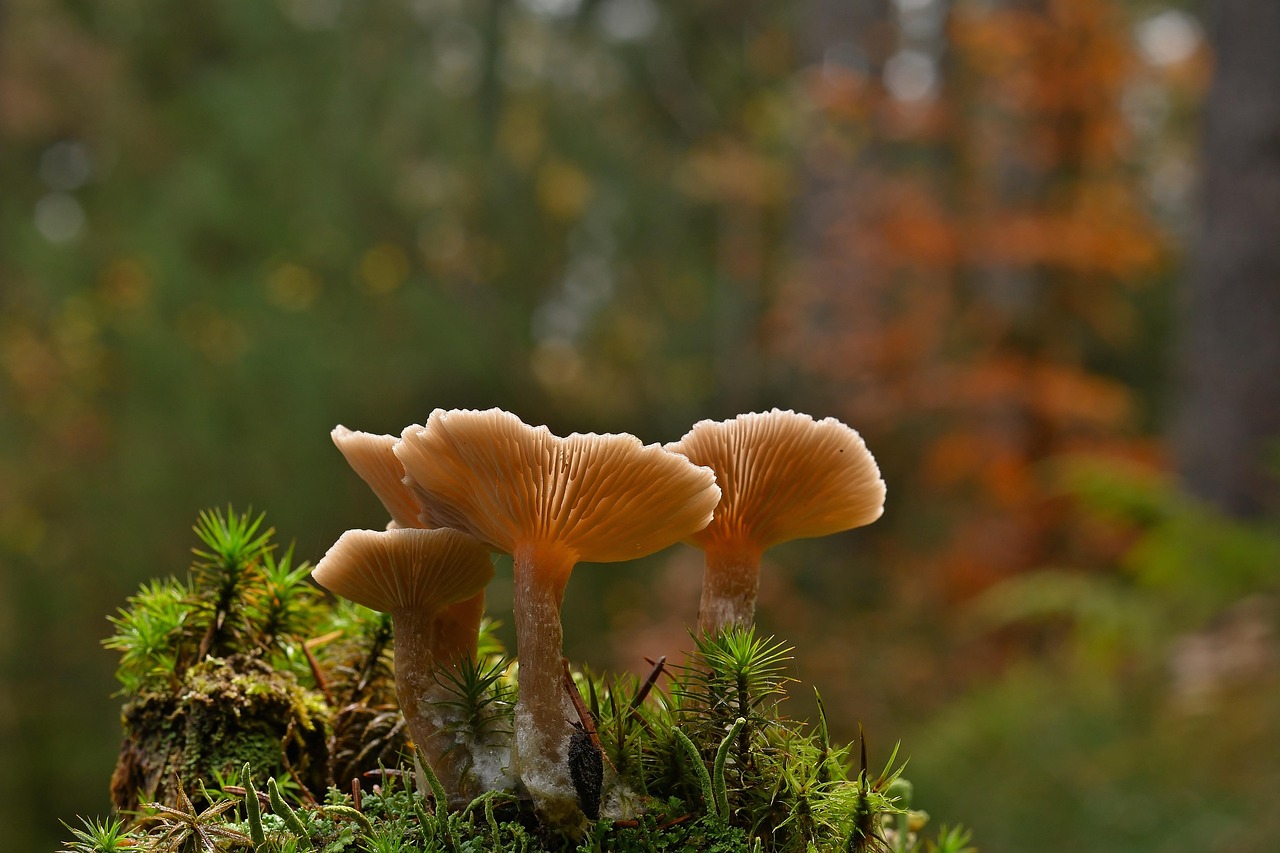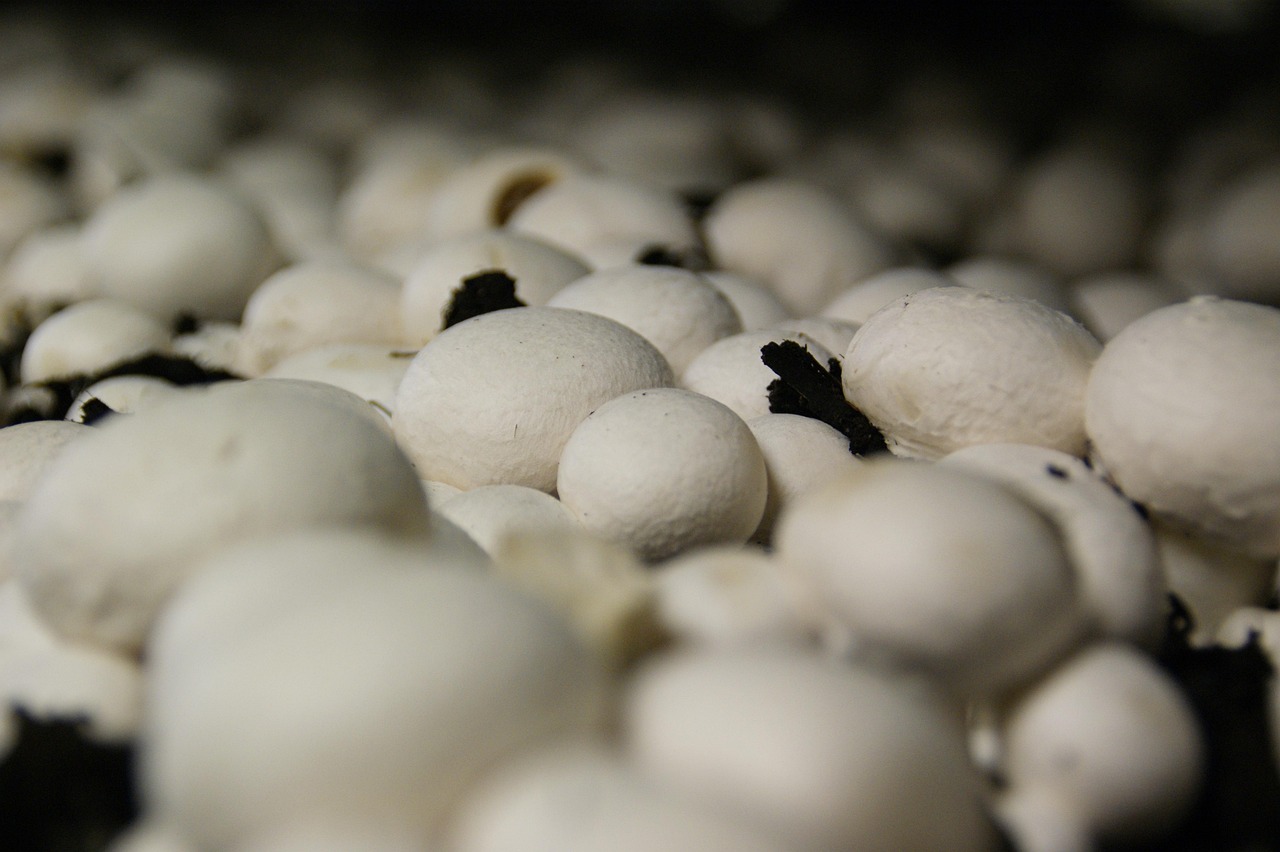Mushrooms growing on trees can be a fascinating sight. These fungi play a vital role in the ecosystem. They can indicate the health of the tree and the surrounding environment. Understanding their presence is essential for appropriate action.
Mushrooms are part of the fungal kingdom, which includes a wide variety of organisms. They thrive in various environments, including forests, gardens, and urban areas. When mushrooms appear on trees, they often signal a deeper issue. They may indicate that the tree is decaying or under stress. However, some mushrooms are harmless and contribute positively to the ecosystem.

There are two primary types of mushrooms found on trees: saprophytic and parasitic. Saprophytic mushrooms feed on dead or decaying matter. They play an essential role in decomposition and nutrient cycling. Parasitic mushrooms, on the other hand, derive nutrients from living trees, potentially harming them in the process.
Types of Mushrooms on Trees
Understanding the types of mushrooms that can grow on trees is crucial for determining their impact. Here are some common types:
- Oyster Mushrooms: These are edible and typically grow on hardwood trees. They help decompose dead wood.
- Ganoderma: This genus includes the famous reishi mushroom. It often indicates decay within the tree.
- Honey Mushrooms: Known for their ability to attack living trees, these can cause significant damage.
- Turkey Tail: A colorful mushroom that is usually harmless, it is often found on decaying logs.
Identifying these types can help in assessing whether they are a threat to the tree’s health or simply part of the natural ecosystem.
The Role of Mushrooms in Tree Health
Mushrooms have a complex relationship with trees. They can signal various conditions affecting tree health. Here are some key roles mushrooms play:
- Decomposition: Mushrooms help break down dead organic material, returning nutrients to the soil.
- Symbiosis: Some fungi form beneficial partnerships with tree roots, aiding in nutrient absorption.
- Indicators of Disease: The presence of certain mushrooms can indicate underlying diseases or decay.
Recognizing these roles can help homeowners and arborists make informed decisions regarding tree care and management.
What to Do When You See Mushrooms

If you notice mushrooms growing on your trees, here are steps to consider:
- Assess the Situation: Check the overall health of the tree. Look for signs of decay or structural weakness.
- Identify the Mushroom: Research or consult an expert to determine the type of mushroom present.
- Consider Professional Help: If you suspect disease or significant damage, consult an arborist for advice.
Taking these steps can help mitigate potential issues and ensure the well-being of your trees. Understanding the relationship between mushrooms and trees allows for better care and appreciation of these vital organisms in our environment.
Understanding the Signs of Tree Health

When mushrooms appear on trees, they can serve as indicators of various health issues. Recognizing these signs is essential for proper tree management. Here are some common symptoms to look for:
- Fungal Growth: An increase in mushroom growth often correlates with tree stress or decay.
- Discoloration: Yellowing or browning leaves may indicate nutrient deficiencies or disease.
- Wilting: Trees that show wilting branches may be suffering from root issues or lack of water.
- Cracks and Splits: Physical damage to the bark can expose trees to fungal infections.
Identifying these symptoms early can help in taking necessary actions to protect the tree’s health.
The Life Cycle of Tree Mushrooms
Understanding the life cycle of mushrooms can provide insight into their growth patterns and what they signify regarding tree health. The life cycle typically includes the following stages:
- Spore Release: Mushrooms release spores into the environment, which can travel via wind or water.
- Germination: When conditions are favorable, spores germinate and start to grow into mycelium, the vegetative part of the fungus.
- Mycelium Growth: Mycelium spreads through the substrate, which can be decaying wood or living tissue.
- Mushroom Formation: When conditions are right, mushrooms emerge as fruiting bodies to reproduce.
This cycle can vary in length based on environmental factors such as moisture, temperature, and the type of tree involved. Understanding this cycle can help you predict when mushrooms might appear and what that could mean for tree health.
Common Tree Diseases Associated with Mushrooms
Certain mushrooms are linked to specific tree diseases. Being aware of these associations can aid in diagnosing tree issues. Here are some common diseases:
- Armillaria Root Rot: Caused by Armillaria species, this disease leads to decay and is often indicated by mushrooms at the base of the tree.
- Ganoderma Butt Rot: Found at the base of trees, this rot results from the Ganoderma fungus, leading to structural weakness.
- Honey Fungus: This parasitic fungus can kill trees by decaying their roots and is often visible as mushrooms near the base.
- Phellinus Weirii (White Pocket Rot): Affects conifers primarily and leads to internal decay, indicated by fruiting bodies on the trunk.
If you suspect your tree may be suffering from any of these diseases, it is vital to seek professional assistance for diagnosis and treatment options.
Cultural Practices for Tree Health
Maintaining healthy trees can reduce the likelihood of mushrooms appearing. Here are some cultural practices that promote tree health:
- Regular Pruning: Remove dead or diseased branches to improve airflow and reduce disease spread.
- Proper Watering: Ensure trees receive adequate water without over-saturation, which can promote root rot.
- Nutrient Management: Test soil and provide necessary nutrients to support overall tree vigor.
- Avoid Damage: Protect tree trunks from mechanical injuries caused by lawn equipment or construction activities.
Implementing these practices can enhance the resilience of trees and minimize the risk of fungal infections.

Identifying Edible vs. Toxic Mushrooms
When mushrooms grow on trees, it is essential to differentiate between edible and toxic varieties. Some mushrooms can be delicious and nutritious, while others can cause severe illness or even death. Understanding the characteristics of both types is crucial for safety.
Characteristics of Edible Mushrooms
Many edible mushrooms have distinct features that can help in identification. Here are some common traits:
- Color: Edible mushrooms often have vibrant colors, which can range from white to deep reds and browns.
- Shape: Many edible varieties have a recognizable shape, such as the cap and stem structure.
- Smell: Edible mushrooms typically have a pleasant aroma, while toxic ones may have an unpleasant or strong odor.
- Habitat: Knowing where certain mushroom types grow can help in identifying edibles. For example, oyster mushrooms are often found on decaying hardwood.
Identifying Toxic Mushrooms
Toxic mushrooms can closely resemble edible ones. Therefore, caution is necessary. Here are some characteristics that may indicate toxicity:
- Bitter Taste: Many toxic mushrooms have a distinctly bitter taste.
- White Gills: Some poisonous varieties, such as the Death Cap, have white gills.
- Ring or Volva: Certain toxic mushrooms display a ring around the stem or a cup-like structure at the base (volva).
- Spore Print Color: The spore print color can be a distinguishing factor; for example, the spore print of the Death Cap is white.
If you are uncertain about a mushroom’s identity, it is best to avoid consumption and consult an expert or a reliable field guide.
Mushroom Foraging Guidelines
If you are interested in foraging for mushrooms, following proper guidelines ensures safety and sustainability. Here are some essential tips:
- Learn from Experts: Consider taking a class or joining a local mycology group to learn from experienced foragers.
- Use Reliable Resources: Invest in a good field guide with clear images and descriptions of mushrooms.
- Avoid Picking Unknown Mushrooms: If you cannot identify a mushroom confidently, do not pick it.
- Follow Local Regulations: Be aware of any local laws regarding mushroom foraging in parks or protected areas.
By adhering to these guidelines, you can enjoy the rewarding experience of mushroom foraging while minimizing risks.
The Ecological Impact of Mushrooms on Trees
Mushrooms play a significant role in forest ecosystems. Their interactions with trees and other plant life can have various ecological implications. Here are some key points to consider:
- Nutrient Cycling: Mushrooms decompose organic matter, returning essential nutrients to the soil, which supports tree health and growth.
- Symbiotic Relationships: Many mushrooms form beneficial relationships with tree roots, enhancing water and nutrient absorption through mycorrhizal networks.
- Pest Control: Certain fungi can help control pests by competing with harmful microorganisms or producing toxins that deter pests.
- Biodiversity Support: The presence of various fungal species contributes to overall biodiversity, which is vital for resilient ecosystems.
Mushrooms are essential players in maintaining ecological balance, demonstrating their importance beyond their immediate appearance on trees.
The Benefits of Mushrooms for Tree Health
Understanding the role of mushrooms in relation to tree health extends beyond merely identifying them. Mushrooms can be beneficial for trees in various ways, even when they are seen as a sign of decay. Here are some notable benefits:
- Soil Enrichment: As mushrooms decompose organic material, they enrich the soil with nutrients, promoting healthy root systems and overall tree vigor.
- Moisture Retention: Fungi can help improve soil structure, which enhances water retention and availability for tree roots.
- Natural Medicine: Some mushrooms have medicinal properties that can support the health of both trees and surrounding wildlife.
- Enhanced Resistance: Trees associated with beneficial fungi may have increased resistance to certain pests and diseases.
These benefits illustrate the importance of mushrooms in maintaining a healthy ecosystem, where trees thrive through symbiotic relationships with fungi.
Mushroom Management Strategies
For homeowners and land managers, implementing effective mushroom management strategies can help maintain tree health and aesthetics. Here are some strategies to consider:
- Regular Monitoring: Keep an eye on your trees for any changes in mushroom growth. Regular inspections can help identify issues early on.
- Encouraging Healthy Growth: Focus on practices that encourage healthy tree growth by providing adequate sunlight, space, and nutrients.
- Controlled Pruning: Prune trees to improve air circulation and sunlight exposure, which can help prevent excessive fungal growth.
- Mulching: Apply organic mulch around the base of trees to retain moisture and suppress unwanted fungal growth.
Taking these steps can enhance the health of your trees while managing any potential mushroom-related concerns effectively.
Final Thoughts
Mushrooms growing on trees can indicate a complex interplay of factors affecting the health of the tree and the surrounding ecosystem. While they may signal decay or disease in some cases, they can also play crucial roles in nutrient cycling and improving soil quality. Understanding the different types of mushrooms, their effects on trees, and the ecological importance they hold is vital for effective tree management.
By taking proactive steps such as regular monitoring, proper cultural practices, and seeking professional advice when needed, homeowners and arborists can ensure that trees remain healthy and vibrant. The presence of mushrooms should not always be viewed negatively; instead, they can serve as reminders of the intricate relationships within our ecosystems. Embracing this complexity allows us to appreciate the beauty and functionality of nature while effectively managing our green spaces.
As you observe mushrooms growing on trees, remember to consider their role within the broader context of tree health and ecosystem balance. By fostering an awareness of these elements, we can contribute to healthier forests and landscapes for generations to come.
